We Accept Most PPO Insurance Policies
All calls and submitted forms are 100% confidential. Insurance could completely cover the cost of treatment


Mental health disorders can have far-reaching effects on a person, affecting their emotional and physical well-being, social interactions, productivity at work and school, and even leading to financial and legal challenges. If left untreated, these disorders can worsen and even lead to self-harm or suicidal thoughts. Although managing mental health issues can be a lifelong journey, mental health facilities in Orange County, CA, can help people manage their symptoms and live a joyful, fulfilling life. There are several treatment options available for mental illness, from weekly therapy sessions to intensive inpatient treatment.
Outpatient mental health treatment in Orange County can provide comprehensive care for those who require more than once weekly sessions but would prefer to reside at home. These programs are structured similarly to inpatient treatment but allow patients continued access to their personal support network and the outside world. They include various therapeutic options, medication management, and holistic services to fit each person’s unique needs.
Recognizing and understanding mental health symptoms is essential for determining when someone may need mental health treatment. Whether it’s for yourself or a loved one, spotting signs of declining mental health can empower you to take the right steps and seek help. Every person’s experience with mental health is unique, and symptoms can vary widely depending on the specific condition. Moreover, depending on how severe the symptoms are can determine what kind of interventions to seek out and the urgency of those interventions. Some indicators that suggest a person may be struggling with their mental health and requires treatment include:

If someone is at risk for harming themselves or others or is gravely disabled due to a mental illness, you can get them admitted to a mental health hospital in California. An emergency psychiatric hold, also known as a “5150 hold”, allows for involuntary admittance to a mental health hospital for 72 hours. A 5150 hold can be initiated by contacting a police officer or a mental health professional. During this 72-hour period, the person undergoes evaluation, allowing the hospital to decide if they require additional psychiatric care or if they can be discharged. The treatment facility may extend the person’s stay beyond the initial 72 hours, but the person can request a lawyer and a hearing to contest the hold.
While a 5150 hold may be necessary during a mental health crisis, they are not the only solution. This measure is specifically for those in immediate danger to themselves or others. If someone you love is experiencing mental health issues, you can encourage them to seek treatment at mental health facilities in Orange County, CA. They may be hesitant about inpatient treatment, so consider suggesting treatment options such as intensive outpatient programs (IOP). These programs offer similar structured mental health treatment but with the ability to continue residing at home.
When someone is experiencing a mental health issue, they can seek help from a mental health professional, like a psychologist, psychiatrist, or therapist. Additionally, a primary care physician can conduct an initial assessment and recommend appropriate treatment options. Determining where to get the right treatment can be challenging, especially if you don’t have a mental health diagnosis.
Mental health treatment in Orange County can provide comprehensive help for people who don’t know where to begin in their healing process. These programs offer access to multiple mental health professionals and therapeutic options so patients can explore what resonates best with them. They can also perform initial evaluations to properly diagnose conditions and guide you toward the most effective treatment solutions.
Ready to take the first step? Contact us to schedule an initial consultation. Our friendly staff is here to guide you through the process and answer any questions you may have.
TMS treatment in Orange County is a non-invasive, FDA-approved therapy that uses magnetic pulses to stimulate specific areas of the brain involved in mood regulation. It’s primarily used for mental health conditions that have not responded well to traditional treatments like medication or psychotherapy.
How It Works:
Typical Course:
Yes. Santa Ana and the broader Orange County area have significant mental health needs, and TMS can be a valuable treatment option.
Key Factors:
Bottom Line: For residents of Santa Ana who are struggling with depression, anxiety, PTSD, OCD, or other treatment-resistant mental health conditions, TMS therapy for mental disorders represents a highly effective, non-invasive, and FDA-approved alternative. It’s particularly valuable for those who have not found relief through medications or conventional therapy, offering hope for lasting improvement in mood and daily functioning.
For many people in Orange County, including veterans and active-duty military personnel, Post-Traumatic Stress Disorder (PTSD) can feel unrelenting. Nightmares, hypervigilance, and emotional numbness may persist even after trying medications or talk therapy. This is where Transcranial Magnetic Stimulation (TMS) comes in—a non-invasive, FDA-approved treatment that targets the brain directly to help restore balance and reduce symptoms.
PTSD is often linked to overactivity in the amygdala (the brain’s fear center) and underactivity in the prefrontal cortex (responsible for emotional regulation). TMS uses magnetic pulses to stimulate the prefrontal cortex, strengthening its ability to regulate fear and stress responses.
For skeptics, think of it as a precision “reset button” for brain circuits—it doesn’t involve sedation or systemic side effects like medications. Still, it can deliver measurable improvements in mood, focus, and emotional resilience.
Several clinics in the region provide specialized TMS for PTSD, including:
For those struggling with persistent PTSD symptoms, TMS offers a rapid, non-invasive option that can complement therapy, improve daily functioning, and restore hope. While not a one-size-fits-all solution, its growing body of evidence makes it a promising choice for veterans, first responders, caregivers, and anyone whose life has been impacted by trauma.

Moment of Clarity in Santa Ana, California, provides personalized, evidence-based outpatient mental health care designed to help veterans, active-duty military personnel, parents, caregivers, and the general public overcome a variety of mental health challenges. Their approach combines traditional therapies with innovative treatments like Ketamine-Assisted Therapy (KAT) and Transcranial Magnetic Stimulation (TMS) to support recovery for conditions that have not responded to conventional methods.
After completing treatment, Moment of Clarity emphasizes continuity of care:
Telehealth services have become increasingly available to meet the mental health needs of residents. For example, Families Together of Orange County offers telehealth appointments for all patients, ensuring continued access to care.
Depression and related mood disorders affect millions of Americans every year, and Orange County is no exception. According to the National Institute of Mental Health, an estimated 8.3% of U.S. adults experience at least one major depressive episode annually—that’s over 21 million people, with rates even higher in urban areas like Santa Ana. The CDC reports that 1 in 5 adults will face a diagnosable mental health disorder in their lifetime, and for many, symptoms persist or return without proper aftercare.
Understanding the different types of depression and mood disorders—and the treatments proven to work for each—can make recovery far more effective. Whether symptoms are triggered by life events, hormonal changes, seasonal shifts, or unresolved trauma, the right therapy can mean the difference between short-term relief and lasting stability.
Below is a detailed guide to common types of depression, PTSD, and related mood disorders, along with the best aftercare and treatment options available today.

For decades, individuals with major depression have often found themselves trapped in a frustrating cycle of trial-and-error treatments—waiting weeks or months to see if a new medication might work, only to be met with minimal relief. Enter Ketamine-Assisted Therapy (KAT)—a breakthrough approach that’s turning this old narrative on its head. Unlike traditional antidepressants that slowly tweak brain chemistry, ketamine acts like a “circuit breaker” for the brain, rapidly rewiring neural pathways and lifting depressive symptoms—sometimes within hours. For many, especially those with treatment-resistant depression, this isn’t just fast relief—it’s the first real sense of hope in years. Backed by neuroscience, real-world clinical success, and mounting research from top institutions, KAT is shifting how we think about depression treatment—and why the future of mental health care might already be here. Here are some of the things that KAT helps with:
Traditional antidepressants tweak monoamines and often need 4–6 weeks of gene-level adaptation. Ketamine acts upstream on glutamate:
Result: Symptom relief detectable ~40 minutes post-infusion, maximal by 24 hours, far outpacing SSRIs.
Single/acute dosing
Series (induction)
Suicidality
For many with treatment-resistant major depression, ketamine-based therapies deliver the fastest clinically meaningful relief we have—often within a day—with response in ~50–70% and remission in ~30–40% after a structured series, especially when followed by maintenance and therapy to harness neuroplasticity. It’s not magic, and it’s not for everyone—but when used properly, it can be the bridge from crisis to stability.
When Ketamine-Assisted Therapy (KAT) and Transcranial Magnetic Stimulation (TMS) are combined, they create a powerful one-two punch for certain mental health disorders—especially those that have resisted traditional treatments.
Here’s the breakdown of where this pairing shines:
💡 Why the combo works so well:
Add within the content
When starting Transcranial Magnetic Stimulation (TMS) or Ketamine-Assisted Therapy (KAT), the first appointment is more than just paperwork—it’s a deep dive into your mental health history, current symptoms, and treatment goals. This step is essential for tailoring a plan that’s both safe and effective.
When Transcranial Magnetic Stimulation (TMS) and Ketamine-Assisted Therapy (KAT) are prescribed together, the process isn’t rushed. The goal is to fully understand your mental health history, ensure medical safety, and create a treatment schedule where both therapies complement each other without overwhelming your mind or body.
Before you even walk into the clinic, most providers will send you:
If you’re pursuing both, the final stage is coordination planning:
If done back-to-back in one day:
If done on separate days:
💡 Why so thorough?
When TMS and KAT are combined, you’re working with two powerful, evidence-based interventions. The success of this pairing depends on getting the timing, dosage, and therapy integration exactly right from the very start. This level of precision is only possible with a longer, more comprehensive initial assessment.

| Name | Description | Distance from Moment of Clarity | Google Maps Link |
| Bowers Museum | A renowned art museum in Santa Ana showcasing world cultures. It’s a cultural hub that encourages mindfulness and reflection, with permanent collections and traveling exhibits. Visitors often describe its peaceful grounds and beautiful architecture as calming. Bowers offers a chance to step away from daily stress, immerse in art and culture, and practice presence in a tranquil environment. | ~2.2 miles | Map |
| Heritage Museum of OC | A historic 12-acre property with Victorian homes, citrus groves, and gardens. It’s popular for quiet walks among historical buildings. The museum grounds are often used for photography and meditation thanks to their serene atmosphere. A great place to reflect on history, slow down, and connect with local heritage. | ~4.3 miles | Map |
| Centennial Regional Park | A large urban park with walking trails, duck ponds, and open green spaces. Visitors find it perfect for relaxing strolls or quiet reading. Families and individuals alike come to unwind, making it a welcoming space for mental health and wellness activities. | ~3.0 miles | Map |
| MainPlace Mall Area (outdoors plaza) | Beyond shopping, its new outdoor seating and landscaping provide calm social spaces. The redesign aims to be a community gathering spot with outdoor art and shaded seating. This area gives locals an easy-access public space for safe social interaction or quiet solo time. | ~4.1 miles | Map |
| Santiago Park Nature Reserve | A natural escape in central Santa Ana with hiking trails, trees, and a creek. It’s popular for bird watching and reflection walks. Residents recommend it as one of Santa Ana’s best “green” spaces to decompress and reconnect with nature. | ~3.5 miles | Map |
| Old Orange County Courthouse | A historic landmark downtown with grand architecture and shaded grounds. Visitors often enjoy quiet reflection on the benches around the courthouse. It’s a place to appreciate local history while taking time for personal introspection. | ~1.6 miles | Map |
| Santa Ana Artist Village | A revitalized area downtown with murals, galleries, and pedestrian spaces. It encourages creativity and self-expression in a community setting. Many find walking here calming and inspiring, making it a therapeutic urban art environment. | ~1.5 miles | Map |
| Discovery Cube Orange County | While known as a children’s science museum, the surrounding area has green landscaping and art. Parents report it’s a low-stress, engaging environment for families. While busy on weekends, it can be surprisingly peaceful on weekdays. | ~3.8 miles | Map |
| Santa Ana Zoo | A small, community-focused zoo known for quiet weekday visits. The lush landscaping and animal encounters can be grounding. Great for mindful time with children or alone, surrounded by greenery. | ~2.6 miles | Map |
| Downtown Santa Ana Historic District | A walkable area with heritage buildings, murals, and community events. Offers public benches, small parks, and shaded walks. Many visitors use the area for quiet urban exploring and casual photography to de-stress. | ~1.4 miles | Map |
| Suburb/Neighborhood | Description | Distance from Moment of Clarity | Google Maps Link |
| Floral Park | A historic neighborhood with tree-lined streets and vintage homes. Residents value its community feel and architectural charm. Popular with families and professionals seeking a classic Santa Ana vibe. | ~2.3 miles | Map |
| French Park | Compact historic district near downtown with Victorian and Craftsman homes. Known for walkability and preservation efforts. Appeals to those who love heritage and city access. | ~1.4 miles | Map |
| Washington Square | Mid-century homes and quiet streets just north of downtown. Friendly, community-focused vibe. A good market for family-oriented services. | ~1.7 miles | Map |
| Wilshire Square | Older neighborhood with beautiful bungalows and a strong neighborhood association. Residents take pride in local history. | ~2.1 miles | Map |
| Saddleback View | Residential area with mixed housing options. Proximity to major transit and employment hubs. Diverse population with families and young professionals. | ~3.8 miles | Map |
| South Coast Metro | The border zone with Costa Mesa includes South Coast Plaza. High-density apartments and condos. Appeals to younger renters, shoppers, and commuters. | ~4.5 miles | Map |
| Riverview West | Diverse, dense suburban area with schools, parks, and retail. There is a good market for family services and Spanish-language content. | ~4.0 miles | Map |
| Meredith Parkwood | Quiet, family-friendly suburban feel with single-family homes. Good schools nearby. Strong sense of local identity. | ~5.5 miles | Map |
| Lacy Neighborhood | Downtown-adjacent redevelopment area. Historic homes, new urban infill projects. Trendy with artists and young professionals. | ~1.2 miles | Map |
| Bella Vista | Residential area in northeast Santa Ana with suburban layout. Parks and schools make it attractive to families. | ~4.3 miles | Map |
| Resource | Description | Distance from Moment of Clarity | Link |
| OC Health Care Agency Mental Health Services | County-run services include crisis lines, outreach, and education. Connects residents to county programs. | ~2.1 miles | Map |
| NAMI Orange County | Family & peer support, education, advocacy for mental health. Runs free classes and groups. | ~3.9 miles | Map |
| OC WarmLine | 24/7 non-crisis emotional support phone line (remote service, Santa Ana-based staff). | 0 miles (phone-based) | |
| Santa Ana Public Library | Free access to mental health information, quiet study areas, and community resources. | ~1.7 miles | Map |
| Santa Ana Senior Center | Social programs reduce isolation among older adults. Includes wellness classes. | ~1.4 miles | Map |
| Name | Description | Distance from Moment of Clarity | Google Maps Link |
| Santiago Creek Trail | Paved/earth trail through Santa Ana and Orange. Great for walking, cycling, and mindful exercise. | ~3.2 miles | Map |
| Mile Square Regional Park | Huge park in Fountain Valley with lakes, picnic areas, and trails. Very popular for peaceful reflection. | ~7.9 miles | Map |
| Irvine Regional Park | Rolling hills, oak groves, wide trails, historic buildings. A top spot for peaceful nature immersion. | ~14 miles | Map |
| Huntington State Beach | Wide sandy beach with mellow waves, good for sunrise/sunset reflection. | ~13 miles | Map |
| Bolsa Chica Ecological Reserve | Coastal wetlands preserve with birdwatching trails. Very calming. | ~16 miles | Map |
| Newport Back Bay | Estuary trails, birdwatching, kayaking, scenic overlooks. | ~12 miles | Map |
| Crystal Cove State Park | Coastal bluff trails, coves, stunning ocean views. Best for deep reflection in nature. | ~19 miles | Map |
| Peters Canyon Regional Park | Hills, reservoirs, and sage scrub trails. Popular for moderate hikes with peaceful views. | ~11 miles | Map |
| Mason Regional Park | Large, manicured park with a lake, walking paths, and quiet lawns. | ~12 miles | Map |
| Talbert Regional Park | Nature trails near the Santa Ana River with restored habitats. Great for tranquil walks. | ~10 miles | Map |
Orange County provides a variety of resources for people facing mental health challenges or crises. Here is a short list of services and resources available:
Mental health treatment can benefit anyone. It can assist in managing mental health symptoms, enhance quality of life, improve interpersonal skills, and significantly alleviate stress. Moment of Clarity is a top choice for mental health facilities in Orange County, CA, offering comprehensive treatment programs for anyone seeking help. Our compassionate and knowledgeable staff specializes in treating a wide range of mental health disorders, including anxiety, depression, bipolar disorder, trauma, eating disorders, and schizophrenia. Moment of Clarity offers a comprehensive array of mental health services to meet individual needs and ensure each person receives the right type of treatment.
We offer multiple levels of outpatient care, including partial hospitalization programs (PHPs), intensive outpatient programs (IOPs), and weekly therapy sessions, accommodating individuals at any stage of their recovery journey. If this is your first time seeking mental health treatment and you feel uncertain about where to begin, don’t worry. Our initial intake process will assess your clinical needs, deliver a proper diagnosis, and help you navigate the best treatment options. To schedule your initial intake or to connect with one of our team members, don’t hesitate to contact us today at 949-625-0564.
We provide outpatient mental health treatment in Orange County, including depression treatment, anxiety treatment, PTSD treatment, bipolar disorder treatment, multiple personality disorder treatment, EMDR therapy, cognitive behavioral therapy (CBT), dialectical behavior therapy (DBT), and TMS therapy.
Moment of Clarity is a trusted mental health center in Orange County offering outpatient treatment for a range of conditions with personalized, evidence-based care close to home.
Yes, we specialize in outpatient mental health treatment in Orange County, providing flexible therapy options tailored to your needs without requiring overnight stays.
We offer EMDR, cognitive behavioral therapy (CBT), dialectical behavior therapy (DBT), and TMS therapy in Orange County to address conditions like depression, anxiety, PTSD, and more.
Our Orange County mental health center provides comprehensive outpatient depression treatment with personalized therapy plans, including CBT, DBT, EMDR, and TMS.
Yes, we provide EMDR (Eye Movement Desensitization and Reprocessing) therapy in Orange County to help clients process traumatic memories and reduce PTSD symptoms.
We offer evidence-based outpatient anxiety treatment in Orange County, including CBT, DBT, EMDR, and medication management as needed.
Yes, our Orange County location provides specialized outpatient PTSD treatment using EMDR therapy, CBT, DBT, and other trauma-informed approaches.
Transcranial Magnetic Stimulation (TMS) is a non-invasive treatment for depression available at our Orange County mental health center. It’s FDA-approved and effective for treatment-resistant depression.
We provide outpatient bipolar disorder treatment in Orange County with a combination of psychotherapy, medication management, and supportive care tailored to each individual.
Yes, our Orange County mental health professionals have experience treating Dissociative Identity Disorder (Multiple Personality Disorder) with trauma-informed and integrative approaches.
Look for licensed, accredited centers offering evidence-based treatment, experienced therapists, and personalized care plans. Moment of Clarity provides all these in Orange County.
You can call or book online to schedule a confidential assessment at our Orange County mental health center to discuss your needs and treatment options.
Yes, we accept many insurance plans for outpatient mental health services in Orange County. Contact us to verify your coverage and discuss payment options.
We focus on personalized, evidence-based outpatient treatment with experienced therapists offering a range of therapies in a safe, supportive environment.
Yes, Moment of Clarity in Santa Ana, California, accepts Tricare West for mental health treatment. Coverage can include therapy, counseling, and other behavioral health services. Check your Tricare West plan for details on benefits and pre-authorization requirements.
Yes, Tricare plans generally cover therapy and other mental health services at Moment of Clarity in Orange County. It’s important to verify your eligibility, coverage limits, and any necessary pre-authorization directly with Tricare or our admissions team.
Moment of Clarity in Santa Ana accepts many Humana insurance plans for mental health treatment. Coverage varies by policy, so we recommend confirming your specific behavioral health benefits with Humana before starting treatment.
Yes, Moment of Clarity’s Santa Ana location accepts Cigna insurance. Cigna plans typically include coverage for therapy, counseling, and mental health treatment. Benefits and co-pays may vary, so contact Cigna or our team for personalized verification.
Aetna insurance plans often include coverage for therapy, counseling, and other mental health services at our Orange County location. Our admissions team can help you verify your Aetna mental health benefits.
Moment of Clarity in Santa Ana accepts Tricare West, Tricare, Humana, Cigna, Aetna, and other major insurance providers for mental health treatment. Contact us for a free insurance verification to see if your plan is accepted.
You can call our admissions team or complete our online insurance verification form. We’ll confirm your benefits with providers like Tricare West, Humana, Cigna, and Aetna to ensure you know exactly what’s covered before you begin treatment.
Tricare West often requires pre-authorization for outpatient or inpatient mental health services in California. Our team at Moment of Clarity can help you navigate the pre-authorization process for treatment at our Santa Ana location.
Yes, many insurance plans cover therapy and mental health services at our Santa Ana location. We work with Tricare West, Tricare, Humana, Cigna, Aetna, and other insurers to make care accessible.
Moment of Clarity in Santa Ana offers comprehensive mental health treatment, including individual therapy, group therapy, psychiatric services, and personalized treatment plans designed to help you achieve lasting recovery.
Contact our team for a free insurance verification. We’ll review your benefits with providers like Tricare West, Humana, Cigna, and Aetna, explain coverage details, and help you maximize your insurance for mental health treatment.
Yes, California law requires most health plans to include coverage for mental health services. Insurers like Tricare, Humana, Cigna, and Aetna typically provide benefits for therapy and psychiatric care. Always confirm your plan’s details with your provider or our team.

